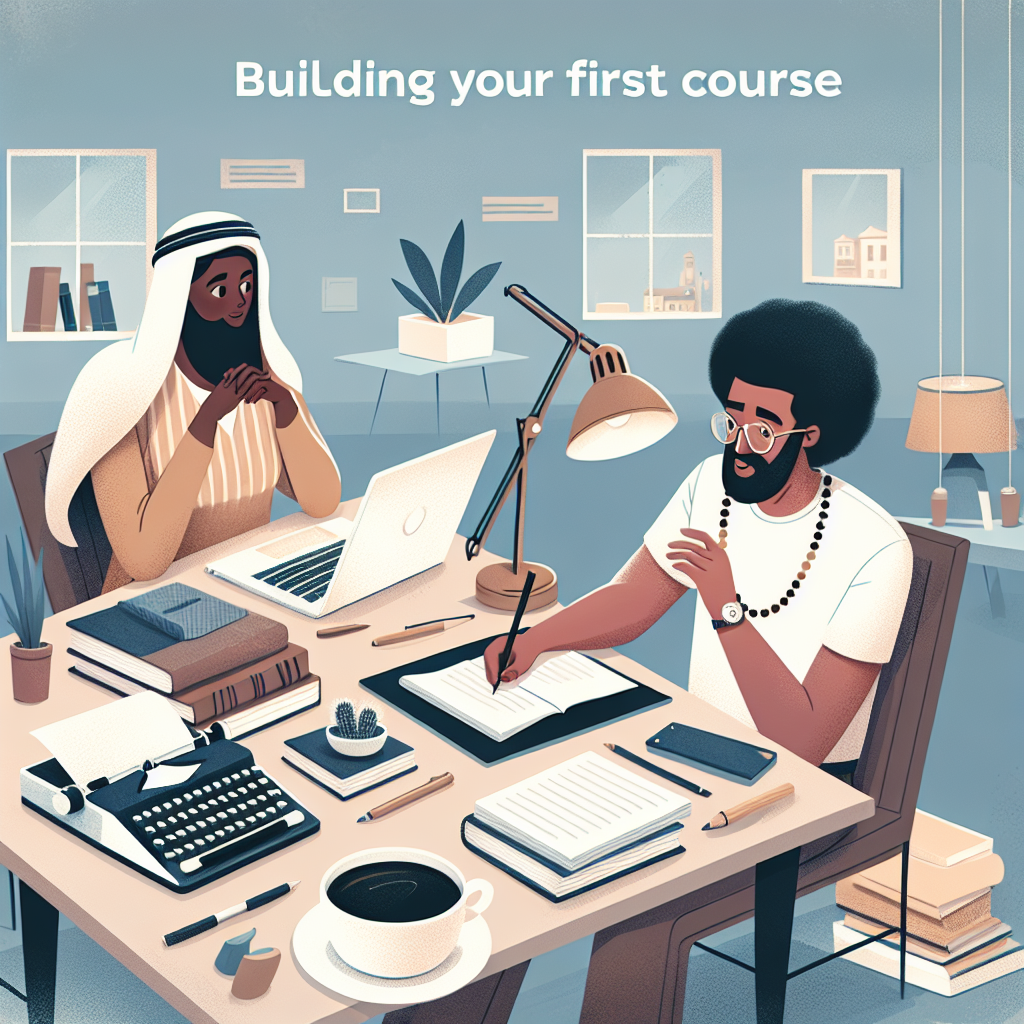Course Content Creation, Course Planning, Course Platform & Tech, Course Pricing & Sales, Launching Your Course
How to Build Your First Course Without Hiring a Team
Build Your First Course can feel like navigating a maze, especially if it’s your first time diving into Initial Course Development. With potential pitfalls around every corner, it’s crucial to step forward with a thoughtful, informed approach. Let’s explore five essential steps to help you steer clear of common challenges, ensuring your DIY Course Design is not just effective but also enjoyable.
Understand Your Audience in First Course Creation
Before diving headfirst into any course building for newcomers, you must understand who you’re creating for. Why is this important? Well, imagine cooking a gourmet meal. You wouldn’t start without knowing your guests’ dietary restrictions, right? The same goes for Independent Course Creation. Conduct surveys, interact with potential students on social media, or engage in casual conversations to gather insights about their needs and preferences. Without this vital information, your course could miss the mark entirely.
Building your first course in isolation is like decorating a room without knowing the floor plan. According to Wikipedia, understanding the requirements of your audience lays the foundation for successful course creation. Knowing what your audience wants ensures you invest your time and resources wisely, delivering content that truly resonates.
Set Realistic Goals for Initial Course Development
Let’s face it: when you’re excited about beginner course building, it’s easy to set overly ambitious goals. While enthusiasm is fantastic, setting unattainably high expectations can lead to frustration. Instead, break down your Create Courses Alone project into manageable tasks. Perhaps you start with a rough outline, then focus on producing one lesson at a time.
Remember, it’s okay to take baby steps. Just as Rome wasn’t built in a day, fantastic courses aren’t either. By setting realistic goals, you’re less likely to feel overwhelmed. As your experience grows, so can your objectives.
Want to build a high-quality email list that drives real growth for your business? Check out our List Building Articles.
Embrace Feedback in DIY Course Design
Feedback is like gold dust in developing courses independently. While it might initially sting, especially if it’s critical, honest feedback helps shape a more refined and engaging course. Whether through beta testing with a small group or seeking input from peers, constructive criticism will guide you to improve and innovate.
Peer review is the cornerstone of Solo Course Project success. Invite input early in the process, allowing space for adjustments and refinement. Remember, the goal isn’t to create a ‘perfect’ course on the first try but to develop a learning experience that evolves and improves over time.
Utilize the Right Tools for Solo Course Project
In modern-day course building, tools can make or break your success. Investing in the right Learning Management System (LMS) or authoring tool is crucial when you’re trying to build courses without help. While it might be tempting to choose the cheapest option, a more robust platform might offer the features you need, like analytics, interactive elements, or easy updates.
Technology is your ally in Independent Course Creation. Dive into reviews, trial periods, or community discussions to identify what could work best for your course needs. Understanding how to leverage tools effectively allows you to do more with less stress, leaving you more time to focus on content creation.
Manage Your Time During Beginner Course Building
One of the biggest challenges in any solo course project is time management. Developing a project timeline that outlines key milestones helps keep you on track without burning out. Incorporate breaks to recharge and avoid the dreaded ‘burnout’. Think of your schedule as a flexible framework; rigidity can sometimes hinder creativity.
Could a friend or family member lend a hand? Even minor tasks, like reviewing a module, can free up your schedule. Balancing development with relaxation boosts productivity and creativity, ensuring you create engaging, insightful courses that students adore.
Time is our most precious asset. Use it wisely in your journey to develop courses independently.
Frequently Asked Questions About Building Your First Course
Q: How do I identify what my audience needs?
A: Engage with your audience through surveys, social media, or direct conversations to understand their needs and preferences. Their feedback is invaluable.
Q: What tools are essential for DIY Course Design?
A: Consider using a robust LMS or authoring tool that caters to your specific needs. Evaluate trial versions before committing.
Q: How can I incorporate feedback effectively?
A: Encourage feedback early and often, using it to revise and enhance your course iteratively for a better learning experience.
If you’re serious about automating and growing your business, check out the exact Automated Marketing System that Ty Cohen uses to save time, generate leads, and build momentum. Get instant access here.

